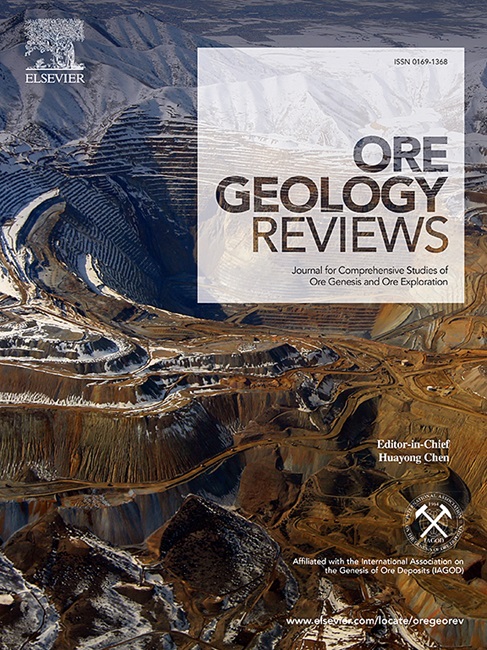Effects of Al3+ on thermochemical sulphate reduction (TSR) at 250°C to 350°C under vapour-saturated pressures: A Raman spectroscopic investigation
IF 3.2
2区 地球科学
Q1 GEOLOGY
引用次数: 0
Abstract
In geological processes, thermochemical sulphate reduction (TSR) is a significant way to transform oxidising sulphur into reducing sulphur, such as H2S, that can promote the formation of metal sulphide deposits. The occurrence of TSR is a complex process, where all kinds of sulphate, organic matter, and catalysis materials are involved, in which Al exists commonly in geological background. In order to figure out the function of Al in the TSR process, a series of experiments were conducted to investigate the TSR by using fused silica capillary capsules combined with Raman spectroscopy at temperatures ranging from 250°C to 350°C in this study. Ethanol (cracked into ethylene by heating) or acetic acid was used as reducing agents, and sodium sulphate or magnesium sulphate as oxidising agents, and the AlCl3 was introduced as a variable to investigate its effect on the initiation of TSR. Raman spectra were collected from the quenched and in-situ experiments. The results indicate that the addition of AlCl3 favours the initiation of TSR. In-situ Raman investigation reveals that HSO4- is the dominant sulphate species involved in TSR under our experimental conditions. This facilitating effect of AlCl3 on TSR has been attributed to the increased acidity in solution caused by the release of H+ through the formation of Al3+-bearing minerals such as natroalunite, where the released H+ combines with SO42- to form HSO4-. And SO2 was detected as an intermediate product during the reduction of HSO4- by in situ Raman spectroscopy. The experimental results imply that it is possible that the TSR can occur and accumulate enough reduced sulphur in a short period of time in an aluminium-rich geological environment at temperatures as low as 250°C.

求助全文
约1分钟内获得全文
求助全文
来源期刊

Ore Geology Reviews
地学-地质学
CiteScore
6.50
自引率
27.30%
发文量
546
审稿时长
22.9 weeks
期刊介绍:
Ore Geology Reviews aims to familiarize all earth scientists with recent advances in a number of interconnected disciplines related to the study of, and search for, ore deposits. The reviews range from brief to longer contributions, but the journal preferentially publishes manuscripts that fill the niche between the commonly shorter journal articles and the comprehensive book coverages, and thus has a special appeal to many authors and readers.
 求助内容:
求助内容: 应助结果提醒方式:
应助结果提醒方式:


